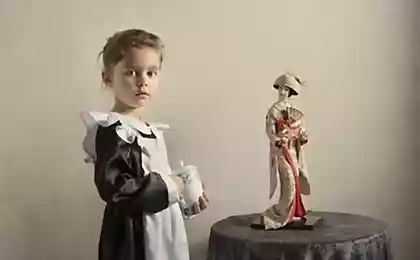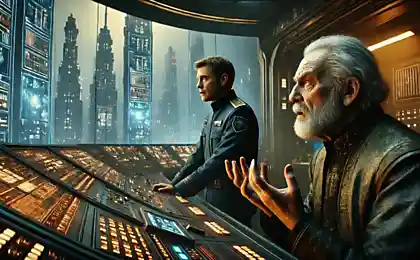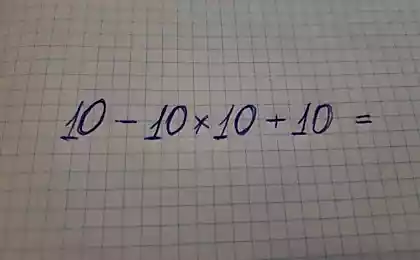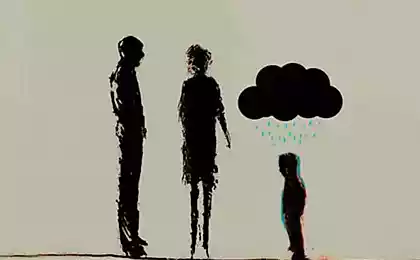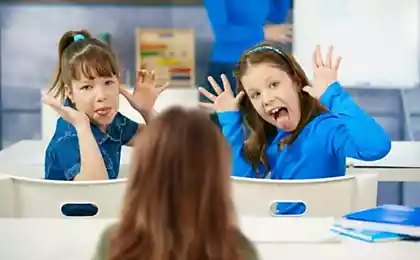588
How to teach a child to count
To count, according to many of us, in our time is irrelevant. The calculator is in every smartphone, and especially in computer and laptop. But constantly, before each action, step or sneezing into the calculator will not climb, but you must consider a lot and constantly.
To believe in the mind – the very skill needed even in our high-tech age of gadgets and electronic computing systems. A simple example illustrating these theoretical calculations, the behavior of buyers and sellers in the store: you must act quickly, because after you great place, and if you do not know how to count, the seller may shortchange you – by mistake or intentionally. Children first their own "outing" make the most of it in the store, so counting them is very useful.
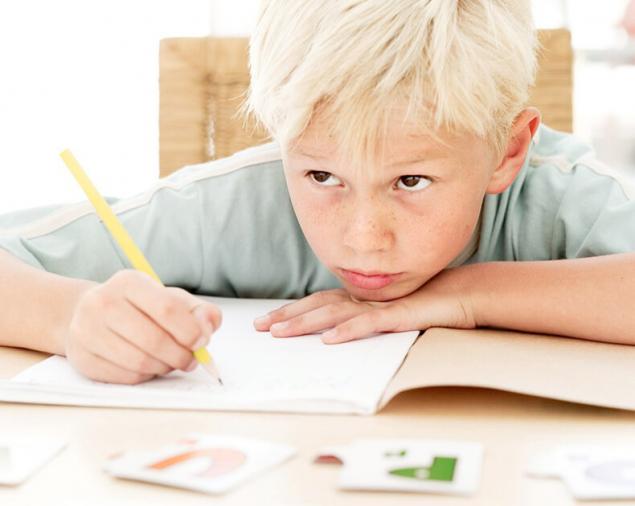
Numeracy is not an innate skill of a man, and very young children still have no idea about numbers, quantities, actions with groups of objects (addition of one group to another, subtracting, etc.).
Among primitive peoples of Asia, Africa and America also undeveloped ideas about numbers and arithmetic operations: the most common numerical system consists of the concepts of "one" "two" and "many"; some tribes can count to five, some seven, but then they all should be unchanged "a lot". From this we can conclude that the oral account and in a rather difficult function for the human consciousness.
So how do you teach a child the first manipulation of the numbers? Before you can master the ability to handle abstract numbers, children must understand the expense in the illustrative examples. Child to begin to talk about the numbers, at least until the first dozen, and count different items that you can see around: birds, trees, flowers in the garden, people on the street, cars in the Parking lot and so on.
Gradually, the baby grasps the "appearance" of specific amounts – whether one, five or ten objects. With undeveloped abstract thinking in young children is highly developed visual memory, he quickly learns shapes and colors. You can practice with him at the expense of showing bright pictures.
The important thing is to understand that a small child sees everything as a game. And training account should also be supplied in the form of a game, so it was interesting. With the right approach, the kid will very quickly grasp the information, because at this age, his brain absorbs everything new is very active.
You can't put him behind a Desk and long to read a boring "lecture" about the arithmetic operations – the child will just lose interest in learning. Consider him to be in different places and situations, during a walk, games, and other joint actions. Can be offered together to cook something delicious, and the child can help determine, for example, how many eggs need for kneading the dough.
After idea about the number more or less is formed, the game can be difficult. Teach your child the first arithmetic operations – addition and subtraction. For example, take toy house (in his role can be a normal big box) and figures of people or animals (you can use regular cubes, which we will call, for example, "dwarves"). Place in the house of a little man and ask the kid how many men live in the house. He needs to answer that one.
Then put to the house another figure and ask how many men have become. Let the child will think and say the right answer. At first it would take a few minutes, it will fail; it is not necessary to hurry or blame. When he says the correct answer, he should open the house and make sure that little man is two. The abstract model that the child has reproduced in memory, confirmed on the illustrative example. Add and take away men from the total number of "residents" of the house than you secure and develop a child's mental calculation skills.
How to teach a child to multiply and divide
If addition and subtraction is fairly easy procedures, then multiplying the child to understand much more complicated. Even more difficult to master division. To help parents come here also good examples, toys and figurines.
You need to prepare the same boxes and sets of figures. In the simplest case, figures will serve as the stones, cubes, caps from plastic bottles – you can find anything. In each box should include an equal number of figures. Offer the kid to fill one box, folded back the figures. Let it count how many items sitting in the box. And after that let them fill in the second box, make sure of the items the same and count the total number of figures in both boxes.
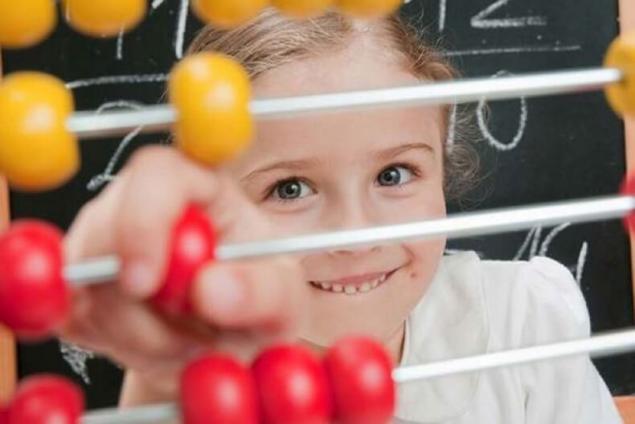
At first, one box should include a few things or two, three. This way you can bring the baby to the idea that two times three equals six, two times two is four and so on.
There is no need to increase the boxes and figurines to infinity: at this stage it is important that the child understand the concrete, material sense of multiplication as the sum of several identical groups of objects.
The next stage – memorization of the multiplication tables. You need to learn by heart as a poem. More precisely – a group of poems. "Lines" in them are examples of: two times three equals six, two times four is eight... For once you can only learn one "poem" — multiplication by two, three, four and so on. Multiplying by five is reminiscent of the poem and apparently his "line" rhyme with each other, so to remember it easier.
Division is the most difficult step for a kid to him even in elementary school start later than other sections of arithmetic. Division is the procedure inverse to multiplication, therefore, for its development, the child should know the multiplication table. However, at first, suitable all the same, good examples, and in this sense the division of the action, the most similar and relevant for the baby.
How to split a candy bar for all everyone to have equally? After all, if someone is less than that of others, he offended. Must be divided fairly, and at first this can be done by trial and error: first, to distribute one candy, then another one... the Total number of candies must choose an adult to do it shared on all children without a trace.
You can then explain to the child that not all numbers can be divided each other. In this division more difficult than multiplication because you can multiply all the fields. If you have the opportunity, you guys familiar with the modulo operator: remainder of the sweets that it is impossible to distribute everything equally takes an adult (or they will get the most obedient of children).
How can you help your child
Implementation arithmetic for a child can be simplified if to tell him about the properties of numbers from 2 to 10. For example, 4 is two times two; 5 different ways to add 3 to 3 or 1 to 4. Especially it is necessary to pay attention to the number 0. To simplify the account you need to deal with round numbers: 30 is three times 10, and 5 is half of 10.
Formulas for more complex procedures
When the child becomes older and already have the basic arithmetic, you can introduce him to the fast formulas for addition and multiplication of large numbers. Such formulas there are many and here we will show some.
Simply multiply a two-digit number by 11. For example, 23*11. You just need to add up the numbers of the first multiplier and the answer is to write the multiplier in the middle of which to write the resulting sum: 2+3=5, therefore, 23*11=253. If the addition of digits turned out two-digit number, the first digit of this number is added to the first figure of the multiplier. For example, 38*11. 3+8=11; the first unit added to the top three, and the second write in the middle answer: 38 x 11=418.
10 exercises to develop mindfulness in children7 oral games, developing thinking
The addition of large numbers can be simplified if you increase one addend for any number, which is then deducted from the answer. For example: 358+340=(358+2)+340-2= 360+340-2=700-2=698.
The following formula will certainly be interesting to many adults, because they greatly simplify the work process, the counting of money and other vital operations with numbers.
Author: Sergey Semenov
P. S. And remember, only by changing their consumption — together we change the world! ©
Source: 4brain.ru/blog/как-научить-ребенка-считать-в-уме/
To believe in the mind – the very skill needed even in our high-tech age of gadgets and electronic computing systems. A simple example illustrating these theoretical calculations, the behavior of buyers and sellers in the store: you must act quickly, because after you great place, and if you do not know how to count, the seller may shortchange you – by mistake or intentionally. Children first their own "outing" make the most of it in the store, so counting them is very useful.

Numeracy is not an innate skill of a man, and very young children still have no idea about numbers, quantities, actions with groups of objects (addition of one group to another, subtracting, etc.).
Among primitive peoples of Asia, Africa and America also undeveloped ideas about numbers and arithmetic operations: the most common numerical system consists of the concepts of "one" "two" and "many"; some tribes can count to five, some seven, but then they all should be unchanged "a lot". From this we can conclude that the oral account and in a rather difficult function for the human consciousness.
So how do you teach a child the first manipulation of the numbers? Before you can master the ability to handle abstract numbers, children must understand the expense in the illustrative examples. Child to begin to talk about the numbers, at least until the first dozen, and count different items that you can see around: birds, trees, flowers in the garden, people on the street, cars in the Parking lot and so on.
Gradually, the baby grasps the "appearance" of specific amounts – whether one, five or ten objects. With undeveloped abstract thinking in young children is highly developed visual memory, he quickly learns shapes and colors. You can practice with him at the expense of showing bright pictures.
The important thing is to understand that a small child sees everything as a game. And training account should also be supplied in the form of a game, so it was interesting. With the right approach, the kid will very quickly grasp the information, because at this age, his brain absorbs everything new is very active.
You can't put him behind a Desk and long to read a boring "lecture" about the arithmetic operations – the child will just lose interest in learning. Consider him to be in different places and situations, during a walk, games, and other joint actions. Can be offered together to cook something delicious, and the child can help determine, for example, how many eggs need for kneading the dough.
After idea about the number more or less is formed, the game can be difficult. Teach your child the first arithmetic operations – addition and subtraction. For example, take toy house (in his role can be a normal big box) and figures of people or animals (you can use regular cubes, which we will call, for example, "dwarves"). Place in the house of a little man and ask the kid how many men live in the house. He needs to answer that one.
Then put to the house another figure and ask how many men have become. Let the child will think and say the right answer. At first it would take a few minutes, it will fail; it is not necessary to hurry or blame. When he says the correct answer, he should open the house and make sure that little man is two. The abstract model that the child has reproduced in memory, confirmed on the illustrative example. Add and take away men from the total number of "residents" of the house than you secure and develop a child's mental calculation skills.
How to teach a child to multiply and divide
If addition and subtraction is fairly easy procedures, then multiplying the child to understand much more complicated. Even more difficult to master division. To help parents come here also good examples, toys and figurines.
You need to prepare the same boxes and sets of figures. In the simplest case, figures will serve as the stones, cubes, caps from plastic bottles – you can find anything. In each box should include an equal number of figures. Offer the kid to fill one box, folded back the figures. Let it count how many items sitting in the box. And after that let them fill in the second box, make sure of the items the same and count the total number of figures in both boxes.

At first, one box should include a few things or two, three. This way you can bring the baby to the idea that two times three equals six, two times two is four and so on.
There is no need to increase the boxes and figurines to infinity: at this stage it is important that the child understand the concrete, material sense of multiplication as the sum of several identical groups of objects.
The next stage – memorization of the multiplication tables. You need to learn by heart as a poem. More precisely – a group of poems. "Lines" in them are examples of: two times three equals six, two times four is eight... For once you can only learn one "poem" — multiplication by two, three, four and so on. Multiplying by five is reminiscent of the poem and apparently his "line" rhyme with each other, so to remember it easier.
Division is the most difficult step for a kid to him even in elementary school start later than other sections of arithmetic. Division is the procedure inverse to multiplication, therefore, for its development, the child should know the multiplication table. However, at first, suitable all the same, good examples, and in this sense the division of the action, the most similar and relevant for the baby.
How to split a candy bar for all everyone to have equally? After all, if someone is less than that of others, he offended. Must be divided fairly, and at first this can be done by trial and error: first, to distribute one candy, then another one... the Total number of candies must choose an adult to do it shared on all children without a trace.
You can then explain to the child that not all numbers can be divided each other. In this division more difficult than multiplication because you can multiply all the fields. If you have the opportunity, you guys familiar with the modulo operator: remainder of the sweets that it is impossible to distribute everything equally takes an adult (or they will get the most obedient of children).
How can you help your child
Implementation arithmetic for a child can be simplified if to tell him about the properties of numbers from 2 to 10. For example, 4 is two times two; 5 different ways to add 3 to 3 or 1 to 4. Especially it is necessary to pay attention to the number 0. To simplify the account you need to deal with round numbers: 30 is three times 10, and 5 is half of 10.
Formulas for more complex procedures
When the child becomes older and already have the basic arithmetic, you can introduce him to the fast formulas for addition and multiplication of large numbers. Such formulas there are many and here we will show some.
Simply multiply a two-digit number by 11. For example, 23*11. You just need to add up the numbers of the first multiplier and the answer is to write the multiplier in the middle of which to write the resulting sum: 2+3=5, therefore, 23*11=253. If the addition of digits turned out two-digit number, the first digit of this number is added to the first figure of the multiplier. For example, 38*11. 3+8=11; the first unit added to the top three, and the second write in the middle answer: 38 x 11=418.
10 exercises to develop mindfulness in children7 oral games, developing thinking
The addition of large numbers can be simplified if you increase one addend for any number, which is then deducted from the answer. For example: 358+340=(358+2)+340-2= 360+340-2=700-2=698.
The following formula will certainly be interesting to many adults, because they greatly simplify the work process, the counting of money and other vital operations with numbers.
Author: Sergey Semenov
P. S. And remember, only by changing their consumption — together we change the world! ©
Source: 4brain.ru/blog/как-научить-ребенка-считать-в-уме/


